 "/>
"/>
 "/>
"/>

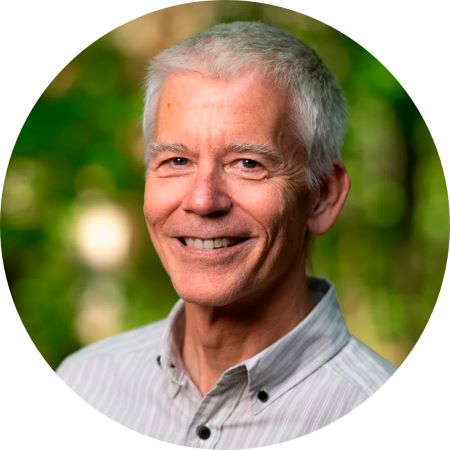
去年十月,ASLA將2023年度景觀公司大獎(jiǎng)授予了在生態(tài)修復(fù)領(lǐng)域深耕四十余年的公司Biohabitats,以表彰該公司在修復(fù)棲息地、保護(hù)生物多樣性、管理水資源和幫助社區(qū)提高氣候韌性等方面的出色表現(xiàn)。在這個(gè)氣候危機(jī)日益嚴(yán)峻的時(shí)代,Biohabitats向我們展示了景觀是如何通過跨學(xué)科合作,切實(shí)地應(yīng)對(duì)現(xiàn)實(shí)挑戰(zhàn)。
The ASLA Landscape Architecture Firm Award was presented to Biohabitats in 2023. For over four decades, Biohabitats has excelled in restoring habitat, protecting biodiversity, managing freshwater, and assisting people in improving community resilience. In a time when we face increasing challenges in climate change and biodiversity loss, Biohabitats serves as an example of how landscape architecture, as both an art and a science, is capable of practically addressing these challenges.

跨學(xué)科協(xié)作模式
INTEGRATED WORKING MODE
Q&A:
1.我們知道Biohabitats擁有來自各種背景和專業(yè)知識(shí)的專業(yè)人士。這些成員是如何共同合作來達(dá)到生態(tài)修復(fù)目標(biāo)的呢?
We know that in Biohabitats you have professionals from all backgrounds and expertise. How do these teams work together to accomplish your restoration goal?
KB:我們采取一種非常綜合的工作方式。在許多項(xiàng)目團(tuán)隊(duì)中都會(huì)有一名景觀設(shè)計(jì)師,會(huì)有一名或幾名科學(xué)家,還可能會(huì)有一名工程師。根據(jù)項(xiàng)目是否會(huì)進(jìn)入施工階段,我們甚至?xí)屛覀兪┕F(tuán)隊(duì)的成員參與到設(shè)計(jì)過程。一般而言,項(xiàng)目越大越復(fù)雜,團(tuán)隊(duì)規(guī)模也就越大,參與項(xiàng)目的學(xué)科也越多。我們的工作常涉及跨學(xué)科交流。如果我們?cè)谠搰?guó)的一個(gè)地區(qū)有項(xiàng)目,而在該國(guó)的另一個(gè)地區(qū)有具有相關(guān)專業(yè)知識(shí)的團(tuán)隊(duì)成員,我們就會(huì)將該團(tuán)隊(duì)成員帶到項(xiàng)目所在地,成為項(xiàng)目團(tuán)隊(duì)一員。
KB: At Biohabitats, we have a highly integrated working style. Many of our projects involve a landscape architect, one or a couple of scientists, and an engineer on the team. Depending on whether it's progressing into construction, we might even have somebody from our construction unit on the team throughout the design process. I believe that the larger and more complex the projects are, the bigger the team becomes, and more disciplines come together to work on it. We collaborate across disciplines. In instances where we have a project in one part of the country and a team member with very relevant expertise in another part of the country, we bring that team member to the project location to be part of the project team.
Q&A:
2.Biohabitats和傳統(tǒng)的環(huán)境工程公司有何不同?
What is the difference between Biohabitats and an environmental engineering company?
KB:我們是一家應(yīng)用型生態(tài)公司,而非環(huán)境公司。雖然與環(huán)境工程公司相似,但我們?cè)诠ぷ鞣绞缴洗嬖谝恍╆P(guān)鍵差異,即通過采用科學(xué)和工程原理解決緊迫的挑戰(zhàn)。環(huán)境工程通常涉及污染的修復(fù),通常依賴于硬基礎(chǔ)設(shè)施來解決問題。我們的方法植根于景觀生態(tài)學(xué)的原則和科學(xué)知識(shí),并從自然開始。而不是硬基礎(chǔ)設(shè)施,我們首先轉(zhuǎn)向基于自然的解決方案,模仿生態(tài)系統(tǒng)和功能。我們?cè)陧?xiàng)目中采用基于自然的解決方案(nature-based approach)。我們認(rèn)為Biohabitats更像是一個(gè)應(yīng)用生態(tài)學(xué)公司,而不是一個(gè)環(huán)境工程公司。我們?cè)噲D將生態(tài)學(xué)知識(shí)應(yīng)用于景觀設(shè)計(jì)之中,幫助我們處理的一些環(huán)境問題。我們認(rèn)為這是一種以生態(tài)為基礎(chǔ)而不是一種以“環(huán)境工程”為基礎(chǔ)的設(shè)計(jì)方法。以“環(huán)境工程”為基礎(chǔ)的方法常常意味著使用硬基礎(chǔ)設(shè)施,而不能有效模仿生態(tài)系統(tǒng)及其功能。
KB: We consider ourselves an applied ecology firm rather than an environmental firm. While we are similar to environmental engineering firms in that we employ scientific and engineering principles to solve pressing challenges, there are some key differences in the way we approach our work. Environmental engineering typically addresses the remediation of contamination and often relies on hard infrastructure to solve problems. Our approach is rooted in the principles and scientific knowledge of the ecology of the landscape, and it begins with nature. Rather than hard infrastructure, we turn first to nature-based solutions that mimic ecological systems and functions.

Biohabitats 與水環(huán)境治理部門、野生動(dòng)物管理局以及其他相關(guān)組織合作,幫助恢復(fù)了俄勒岡州Tualatin River國(guó)家野生動(dòng)物保護(hù)區(qū)Chicken Creek的自然流動(dòng)和生態(tài)功能。
Working with Clean Water Services, the U.S. Fish and Wildlife Service, and other project partners, Biohabitats helped restore natural flow and regenerate stream, wetland, and floodplain functions along Chicken Creek in the Tualatin River National Wildlife Refuge in Sherwood, OR. cre. Fred Joe.
Q&A:
3.Biohabitats如何評(píng)估項(xiàng)目成果?
How do you evaluate a project?
KB:我認(rèn)為一切都可以歸結(jié)為:我們是在保護(hù)和促進(jìn)生命發(fā)展嗎?評(píng)估的基準(zhǔn)便是生物多樣性。
KB: I think it all boils down to: Are we conserving and enhancing life? Our bottom line is biodiversity.
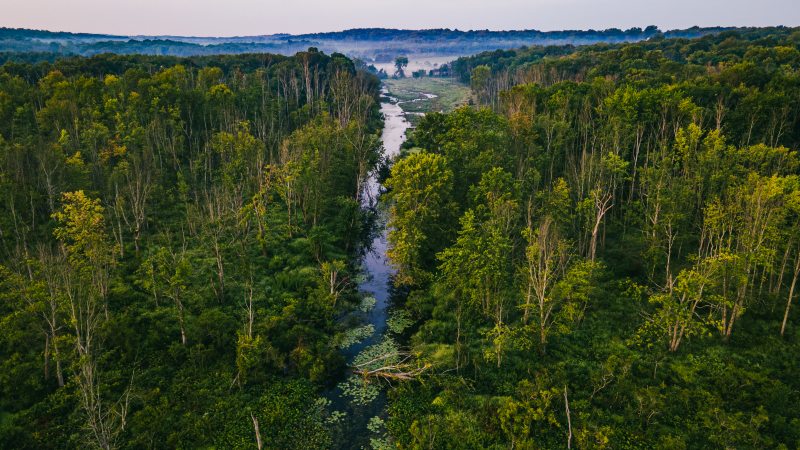
Biohabitats協(xié)助Geauga公園進(jìn)行生態(tài)修復(fù),改善了Beaver Creek與洪泛區(qū)的連接。這些工作提升了 Chagrin 河源頭的水質(zhì)和棲息地情況。Chagrin 河是俄亥俄州15 個(gè)國(guó)家級(jí)野生動(dòng)物及風(fēng)景名勝河區(qū)之一。
Biohabitats helped the Geauga Park District restore stability, ecological function, and floodplain connectivity to a channelized Beaver Creek. The restoration enhances water quality and habitat at the headwaters of the Chagrin River, one of only 15 State-designated Wild, Scenic, and/or Recreational Rivers in Ohio. cre. David Ike Photography.
公司項(xiàng)目實(shí)踐
ABOUT BIOHABITATS
Q&A:
4.您曾多次參與總體規(guī)劃項(xiàng)目,并和SCAPE這樣的景觀設(shè)計(jì)事務(wù)所合作。能談?wù)勀愫?/span>SCAPE合作的項(xiàng)目么?
You do master planning projects working with other landscape firms such as SCAPE. Would you like to talk about one of the projects you collaborated with SCAPE on.
KB:我們與SCAPE的合作非常成功。項(xiàng)目位于佐治亞州亞特蘭大市Chattahoochee河。SCAPE被聘請(qǐng)?jiān)O(shè)計(jì)沿河百英里的綠道。項(xiàng)目不僅要引導(dǎo)人們沿著河流移動(dòng),還需考慮將其構(gòu)建為一個(gè)生態(tài)走廊。我們需要研究,特別是在氣候變化的情況下,物種將如何在河流及其洪泛區(qū)上下移動(dòng)? 尤其是我們要將氣候變化導(dǎo)致的物種遷徙考慮在內(nèi)。因此,我們對(duì)這一百英里進(jìn)行了科學(xué)分析,采用景觀生態(tài)學(xué)的方法,研究了植被走廊和棲息地所在的區(qū)域,分析了物種如何在這些區(qū)域之間遷徙或移動(dòng),以及如何規(guī)劃綠道才能增加棲息地面積,鼓勵(lì)更多物種的棲息和遷移。
KB: We had a great collaboration with SCAPE on the Chattahoochee RiverLands. The Chattahoochee River flows through the city of Atlanta, Georgia. SCAPE was hired to do a master plan for a 100-mile greenway along the river, and part of that effort was to not only move people along the river but to think of it as an ecological corridor. How will species move up and down the river and its floodplain, particularly in light of the changing climate? Especially when we're thinking about climate change and how species will begin to move because of climate change. Taking a landscape ecology approach, we conducted scientific analyses of the 100-mile stretch. We identified vegetative corridors and habitat patches, examined how species would move or migrate in those areas, and considered how the greenway plan could serve as a catalyst for expanding opportunities for species to inhabit and move through the corridor.
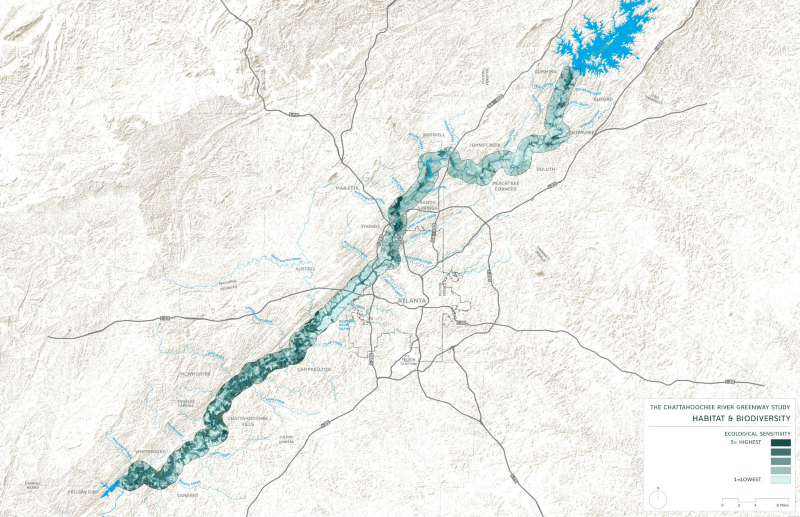
Biohabitats, 作為Chattahoochee河地項(xiàng)目的生態(tài)規(guī)劃專家,Biohabitats 對(duì)100英里走廊進(jìn)行了棲息地間隔和生物多樣性等分析。
As the ecological design and planning consultant for the Chattahoochee RiverLands project, Biohabitats performed habitat conductivity and biodiversity sensitivity analyses for the 100-mile corridor. cre. Jennifer Dowdell.
Q&A:
5.您是如何研究生態(tài)走廊,并使設(shè)計(jì)介入其中呢?
How do you research the corridor for the species and then combine human intervention with that?
KB:首先,我們選擇一些已知存在于該地區(qū)并且會(huì)遷徙的物種。我們研究這些物種,比如鳥類、小型哺乳動(dòng)物或者授粉昆蟲等在環(huán)境中活動(dòng)的各種信息。根據(jù)這些研究,我們了解需要哪些條件來為這些物種構(gòu)建棲息地,并且保護(hù)它們?cè)诰坝^中順利移動(dòng)。
獲取了這些信息之后,我們可以使用GIS模型來對(duì)景觀進(jìn)行建模,找出這些物種可以移動(dòng)的區(qū)域以及在景觀中移動(dòng)的障礙物是什么——無論是道路、基礎(chǔ)設(shè)施、建筑物還是類似的障礙。隨后,我們將信息可視化并與景觀設(shè)計(jì)師合作,確定我們可以采取什么措施來幫助減輕這些影響。
KB: First, we select certain species that we know are in the area and are known to migrate or move. We study or research what is known about how those species move in the landscape, whether it is a bird or a small mammal like a raccoon or a pollinator species. We conduct all the necessary research, reviewing scientific studies to understand what is required from a habitat standpoint and what is needed for them to move across the landscape.
Once we get that information, we can use GIS to model the landscape and identify areas where species can move, as well as areas where there are barriers to movement in the landscape—whether it is road, infrastructure, buildings, or similar obstacles. Subsequently, we will present this information and collaborate with landscape architects to determine what measures we can take to help mitigate those barriers. While there will always be some impacts, the goal is to minimize them and, if elimination is not possible, find ways to mitigate them in a manner that minimizes potential long-term impacts.
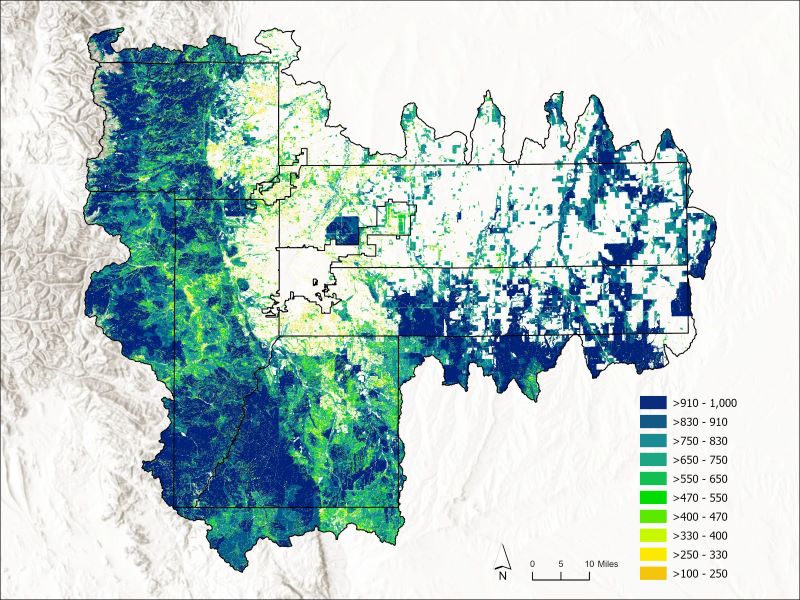
Biohabitats 與丹佛自然聯(lián)盟及自然保護(hù)協(xié)會(huì)合作,為開放空間規(guī)劃制定了一個(gè)初步的生態(tài)保護(hù)框架。該項(xiàng)目涉及繪制整個(gè)地區(qū)的棲息地質(zhì)量地圖。
Biohabitats worked with the Metro Denver Nature Alliance and its founding member, The Nature Conservancy, to develop a preliminary conservation framework for prioritizing open space planning initiatives. The project involved mapping habitat quality across the region. cre. Biohabitats.
Q&A:
6.我們注意到Biohabitats有自己的施工團(tuán)隊(duì),并完成了很多河道修復(fù)、城市生態(tài)綠地之類的項(xiàng)目(包括之前獲得ASLA獎(jiǎng)的Washington Avenue項(xiàng)目)。能否跟我們分享一些您與常規(guī)景觀設(shè)計(jì)公司的不同之處?
We also want to hear about your design-build practice. I saw a lot of stream restoration projects including the award-winning Washington Avenue project. Can you share with us some of the differences between you and a landscape design firm?
KB:我認(rèn)為這也是我們與許多其他景觀設(shè)計(jì)公司不同的地方,因?yàn)槲覀儏⑴c設(shè)計(jì)-施工項(xiàng)目并擔(dān)任總承包商。在這些項(xiàng)目中,我們承擔(dān)所有風(fēng)險(xiǎn),以兩種方式進(jìn)行設(shè)計(jì)和施工。首先,我們充當(dāng)總承包商管理整個(gè)建設(shè)過程,但將所有工作分包給當(dāng)?shù)氐氖┕り?duì)。其次,我們聘用自己的施工人員和設(shè)備進(jìn)行生態(tài)修復(fù)工作。我們的施工團(tuán)隊(duì)總部位于俄勒岡州波特蘭,專門致力于恢復(fù)太平洋西北部主要河流內(nèi)的鮭魚棲息地。我們?cè)诖笮秃恿飨到y(tǒng)中安裝木構(gòu)、加固河岸并重建棲息地,項(xiàng)目遍布加利福尼亞州北部到加拿大的多個(gè)地區(qū)。
KB: What sets us apart from many other landscape architecture firms is that we engage in design-build projects, serving as the general contractor. We assume all the risks in these projects. With our construction practice, we employ two different approaches. First, with design-build, we serve as the general contractor and subcontract the work to local construction firms in the area, overseeing the entire process. Second, we employ our own construction crews and equipment to self-perform restoration work. Our self-perform unit is based in our Cascadia Bioregion office in Portland, Oregon. We do not subcontract this work; instead, our crews specialize in restoring salmon habitat within the major rivers in the Pacific Northwest. They work in big river systems installing log jams, stabilizing riverbanks, and rejuvenating habitat, covering a region from northern California to Canada.

Biohabitats施工團(tuán)隊(duì)幫助Columbia River河口重新與960 英畝的漫灘相連。
Biohabitats Construction helped the Columbia River Estuary Partnership reconnect 960 acres of the Columbia River floodplain. cre. Biohabitats.
我們也進(jìn)行一些拆壩工作。許多大壩,特別是那些不太高的低頭壩,正在變得過時(shí),結(jié)構(gòu)也不再牢固。因此,目前有大量的拆壩工作,這對(duì)河流生態(tài)非常重要,特別是在太平洋西北地區(qū),鮭魚需要上游遷徙到這些溪流中產(chǎn)卵。因此,我們積極參與拆除大壩的工程,并恢復(fù)河流生態(tài)系統(tǒng)。
We also engage in dam removal work. Many dams, especially low head dams that are not too high, are becoming obsolete or have reached the end of their lifespan, making them structurally unsound. Therefore, there is an ongoing effort to remove many dams, which is crucial, especially in the Pacific Northwest where salmon need to migrate up these streams to spawn. Hence, we are actively involved in dam removal projects, where we remove the dam and restore the river system.
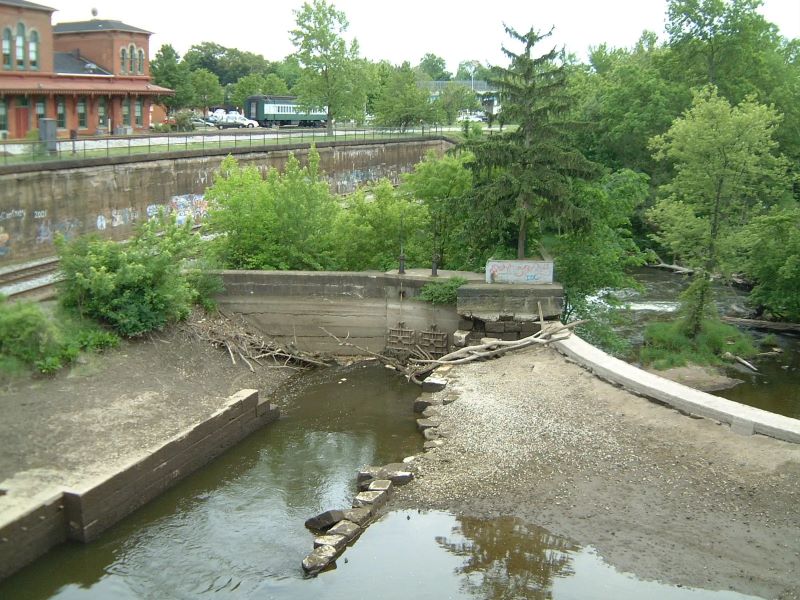

上圖展示了俄亥俄州肯特大壩河修復(fù)項(xiàng)目的前后情況。Biohabitats的設(shè)計(jì)不僅將河流轉(zhuǎn)變?yōu)楹细竦乃鷹⒌兀疫€為皮劃艇和獨(dú)木舟提供活動(dòng)空間,并修復(fù)了大壩上游河岸的植被。The pictures above depict the before and after of the Kent Dam River Restoration project in Ohio. Biohabitats’ design not only transformed the river into a qualified aquatic habitat but also included opportunities for kayak/canoe passage through the stretch of river and bank revegetation upstream of the dam. cre. Biohabitats.
Q&A:
7.您有一些由原住民主導(dǎo)的特殊項(xiàng)目。在與原住民合作時(shí),如何從原住民知識(shí)中獲得靈感,或者理解他們對(duì)自然不同的理解?
You have some special tribe-led projects. When working with indigenous people, how can you get inspiration from indigenous knowledge? They have a different understanding of nature, maybe they do not call it “ecology”, but they have their narrative.
KB:我們與原住民有著相當(dāng)多的合作。必須承認(rèn),很多原住民文化中對(duì)人與自然關(guān)系的理解,是和我們完全不同的。他們對(duì)時(shí)間的看法也與我們大相徑庭。他們那種以生態(tài)為中心、重視周期性的世界觀,很值得我們學(xué)習(xí)。我發(fā)現(xiàn)很多原住民群體都認(rèn)為自然是個(gè)“循環(huán)”。它有點(diǎn)像彈簧,朝著某個(gè)方向發(fā)展,但也一次又一次回到原本的模樣。我們可以從他們認(rèn)識(shí)自然的方式中受到很多啟發(fā),比如,我們需要考慮長(zhǎng)期的時(shí)間尺度,考慮周期性,考慮物種和人類之間的關(guān)系,以及不同物種之間、植物和動(dòng)物之間的關(guān)系。
KB: We do quite a bit of work with indigenous tribes and communities. For us, it is important to acknowledge that for many Indigenous communities, their relationship with the land and nature is fundamentally different from ours, as is their notion of time. It is a much more eco-centric perspective woven into a cyclical time horizon. It changes the paradigm in which you are working, and there is so much for us to learn from that. Nature goes in cycles, always evolving in a certain direction but also looping back on itself repeatedly, much like a Slinky. I’ve found that many indigenous communities perceive nature in this manner, and there is a wealth of knowledge for us to gain, encouraging us to contemplate long-term time scales, cycles, and the intricate relationships between species and people, as well as between different species, plants, and animals.
在景觀設(shè)計(jì)中,我們經(jīng)常要考慮材料或植物,卻常常忽略了那些不可見的生態(tài)過程和功能,而恰恰是它們塑造了景觀并支持了動(dòng)植物的休養(yǎng)生息。我們很少花時(shí)間去理解土壤中的營(yíng)養(yǎng)流動(dòng)和濕度調(diào)節(jié),以及樹木通過化學(xué)酶和其他方式相互溝通等。我認(rèn)為,在這些方面,原住民對(duì)此有著比我們更深刻的理解。
In landscape architecture, we tend to focus mostly on materials or plants. We often don’t think about ecological processes and functions which are invisible to us, that shape the landscape and support the flora and fauna. While we see the end results, we don’t take the time to understand and work with the processes that cycle nutrients through the soil, move water across the landscape or use chemical signaling to communicate between plants. It’s been my experience that indigenous cultures have a much longer-evolved understanding and appreciation of these processes than we do.
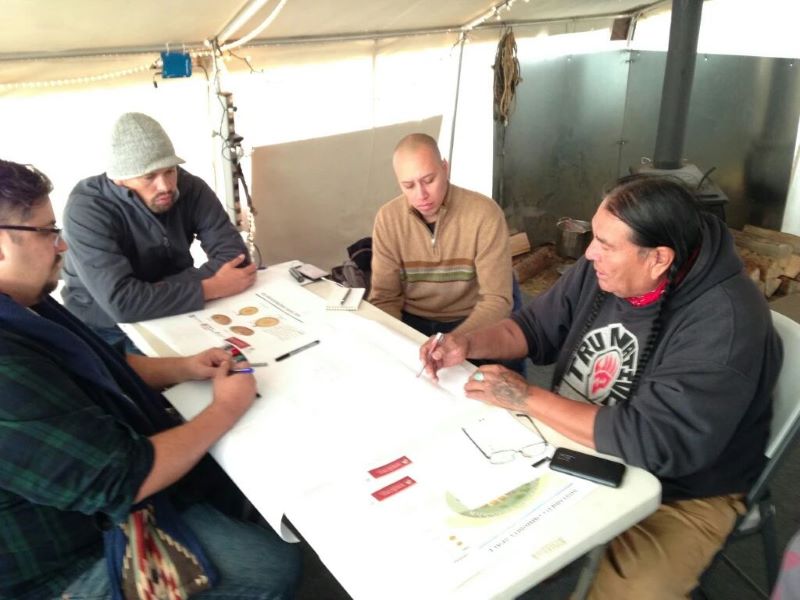
2016年,Biohabitats與原住民社區(qū)成員及其他組織合作,共同規(guī)劃了北達(dá)科他州 Oceti ?akowi? 營(yíng)地。Biohabitats 很榮幸能夠?yàn)樯鐓^(qū)提供雨洪管理和廢水管理等相關(guān)規(guī)劃和設(shè)計(jì)服務(wù)。
In 2016, Biohabitats worked alongside Tribal members, the Indigenous Environmental Network, Blue Star Integrative Studio, and other collaborators in planning the Oceti ?akowi? camp near Standing Rock. Biohabitats was honored to contribute planning and design services related to stormwater, greywater, and wastewater management. cre. Erin English/Biohabitats.
設(shè)計(jì)之外
BEYOND DESIGN
Q&A:
8.實(shí)施一個(gè)具有大想法的項(xiàng)目,在中國(guó)只需教育首要領(lǐng)導(dǎo)者,而在美國(guó),則涉及教育每個(gè)人。這對(duì)于美國(guó)來說準(zhǔn)確嗎?是否需要大量時(shí)間投入?
In China, implementing a big idea only requires educating the leader, whereas in America, it involves educating everyone. Is this accurate for the U.S., and does it necessitate a significant time investment?
KB:我們經(jīng)常讓我們的客戶和社區(qū)參與我們正在努力解決的挑戰(zhàn),或受其影響。一些人對(duì)我們的工作很了解,但更多的是不怎么了解的人,所以我們努力在整個(gè)設(shè)計(jì)和施工過程中與他們緊密聯(lián)絡(luò)。
KB: We often engage both our clients and the communities involved in and/or impacted by the challenges we are working to address. Some of them are well-informed about the work that we're doing, but many are not. We strive to deeply engage with communities throughout the entire design and construction processes.
我認(rèn)為真正的“社區(qū)參與”和“簡(jiǎn)單通知和詢問”是不一樣的。我們努力深度與社區(qū)合作,共同創(chuàng)造反映社區(qū)愿景的設(shè)計(jì)流程和成果。這需要時(shí)間,而且從來都不是一個(gè)線性的過程。在社區(qū)參與之外,我們還會(huì)積極宣傳我們所崇尚的生態(tài)設(shè)計(jì)理念。我們堅(jiān)信,生物多樣性的流失,可能成為比氣候變化更為嚴(yán)重的全球危機(jī),應(yīng)得到更多的重視。我們的目標(biāo),是向世界以及我們合作的社區(qū)傳達(dá)這些理念。
I believe there's a distinction between true community engagement and simply informing community members about design intentions and asking for input. We strive to go deeper with community engagement, co-creating a process and outcome that truly reflect communities’ aspirations. This does take time and is never a linear process. Complementing our community engagement approach is advocating for the causes and issues we believe in. We assert that the loss of biodiversity is an epic global crisis, most likely more critical than climate change, yet often overlooked. Our aim is to elevate this message globally and within the communities where we work.
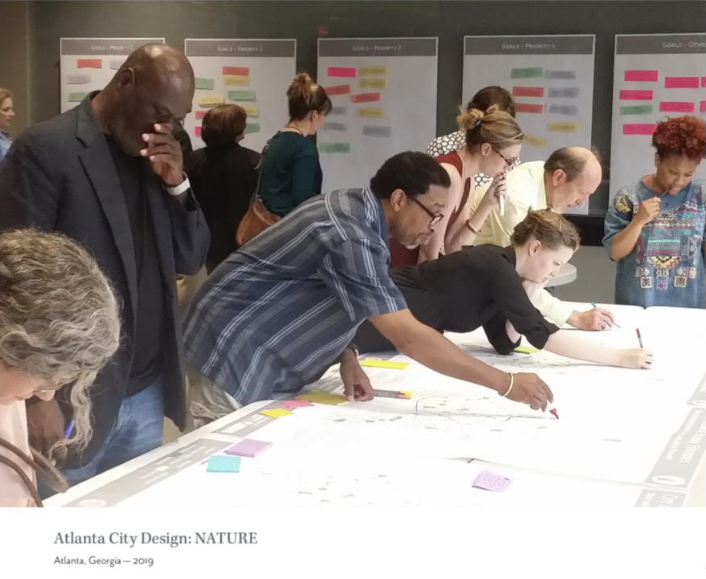
眾多社區(qū)和利益相關(guān)者參與的事件、活動(dòng)和討論為生態(tài)框架的發(fā)展提供了信息,以保護(hù)、恢復(fù)和強(qiáng)調(diào)自然的方式指導(dǎo)未來的發(fā)展,并創(chuàng)建一個(gè)全市范圍的綠色網(wǎng)絡(luò),使佐治亞州亞特蘭大的所有居民受益。
Numerous community and stakeholder engagement events, activities, and discussions informed the development of an ecological framework to guide future growth in a way that preserves, restores, and accentuates nature and creates a citywide green network to benefit all residents of Atlanta, GA.
Q&A:
9.這個(gè)目標(biāo)是在項(xiàng)目開始時(shí)就清晰明確的,還是需要被傳達(dá)并向客戶推銷?
Is your project goal always clear at the beginning of each project, or do you need to keep communicating that idea and persuading your client?
KB:如果你指的目標(biāo)是阻止生物多樣性的喪失、減輕氣候變化的影響以及糾正環(huán)境不公正現(xiàn)象,那么是的,這是我們清楚但客戶未必愿意“買單”的目標(biāo)。如果我們感到客戶對(duì)積極變化持開放態(tài)度,或相信我們有能力引導(dǎo)客戶朝著更建設(shè)性方向發(fā)展,那么我們對(duì)實(shí)現(xiàn)這些目標(biāo)就會(huì)更有信心。我們希望項(xiàng)目能支持各種生命的發(fā)展,而不是對(duì)它們生存帶來破壞。我認(rèn)為我們已達(dá)到自主挑選項(xiàng)目的程度:如果事先不能確定目標(biāo)能否實(shí)現(xiàn)(或部分實(shí)現(xiàn)),我們可能會(huì)拒絕這個(gè)項(xiàng)目。
KB: By goal, if you are referring to the need to halt the loss of biodiversity, reverse and mitigate the impacts from climate change, and right environmental injustices, then yes, it’s clear to us but not always clear or welcomed by our clients. In cases where we sense the client's openness to positive changes or believe we can influence the client in a constructive direction, we have greater confidence that we can achieve these goals. Our aim is to take on projects with the intent of shifting outcomes that support life-affirming actions, rather than causing life-diminishing impacts. I think we're getting to the point right where we may turn down work if it isn't clear upfront that we can achieve, at least in part, these goals.
Q&A:
10.請(qǐng)問您采用何種的評(píng)價(jià)體系或方法來評(píng)估項(xiàng)目建成結(jié)果?可否分享近年來的成功案例?
Do you employ specific metrics or methods to assess the outcomes of your projects? How do you gather information, and can you share examples of successful evaluations over the years?
KB:在項(xiàng)目初期,我們會(huì)花費(fèi)很多時(shí)間來定義項(xiàng)目的成功標(biāo)準(zhǔn),列出成功要素,并用它們來指導(dǎo)我們對(duì)建成項(xiàng)目的監(jiān)測(cè)和評(píng)估。每個(gè)項(xiàng)目都有自己獨(dú)有的監(jiān)測(cè)指標(biāo)。比如,一個(gè)河流生態(tài)修復(fù)項(xiàng)目的監(jiān)測(cè)指標(biāo)常包括河岸侵蝕程度或各種魚類的存在數(shù)量。我們會(huì)首先建立成功標(biāo)準(zhǔn),制定監(jiān)控計(jì)劃,然后進(jìn)行相應(yīng)的監(jiān)控。
KB: In the initial stages of our project, we invest considerable time in defining our success criteria, outlining what constitutes success for the project. This, in turn, guides our approach to assessing and monitoring the project. Our monitoring criteria are based on indicators of success, unique to each project. For example, a stream restoration project may include success criteria associated with the amount of continued stream bank erosion or the presence of a diverse range of fish and macroinvertebrates species. We first establish the success criteria, develop a monitoring plan, and then perform the monitoring accordingly.
如果項(xiàng)目偏離了預(yù)期,我們會(huì)首先確定這種偏離是否是不可取的,如果是的話,我們會(huì)探究這種偏差是將導(dǎo)致項(xiàng)目失敗,還是會(huì)產(chǎn)生與預(yù)期不同但可接受的結(jié)果。后者將使我們重新審視我們的假設(shè)并修改成功標(biāo)準(zhǔn)。在處理生命系統(tǒng)(河流、森林、草原)時(shí),我們不斷評(píng)估,確保其與我們?cè)O(shè)想的路徑一致,并評(píng)估任何偏離的影響,確定它是有利還是有害。
If the project is deviating from the anticipated trajectory of success, we first determine if the divergence is undesirable and if so, if it will result in project failure or if is it a trajectory that will have a different but acceptable outcome. This may cause us to reexamine our assumptions and revise our success criteria. In dealing with a living system— a river, forest, prairie —we continually assess the trajectory, ensuring it aligns with our envisioned path and evaluating the implications of any divergence, determining whether it is advantageous or detrimental.
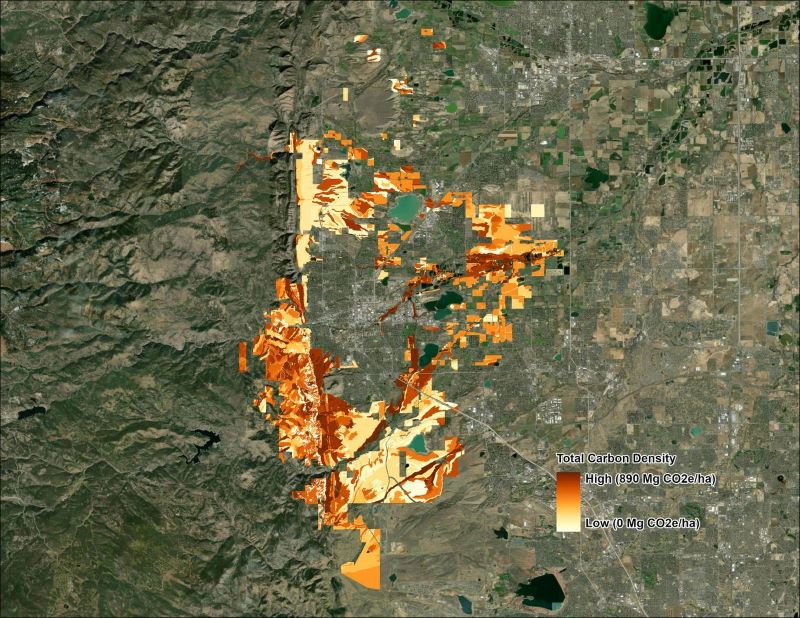
Biohabitats幫助科羅拉多Boulder市園林部門了解其 46,640 英畝保護(hù)區(qū)的碳儲(chǔ)存能力,以便更好地評(píng)估基于自然的解決方案的潛力,并加強(qiáng)這些土地的生態(tài)系統(tǒng)恢復(fù)力。
Biohabitats helped the City of Boulder’s Open Space and Mountain Parks Department understand the carbon storage capacity of its 46,640 acres of preserved and protected land in order to better evaluate the potential of nature-based solutions to enhance ecosystem resilience on those lands. cre. Biohabitats.
SCALE UP
Q&A:
11.中國(guó)現(xiàn)已逐漸呈現(xiàn)出對(duì)生態(tài)修復(fù)類產(chǎn)業(yè)的濃厚興趣與熱情。您是否可以闡述如政策、資金、社區(qū)參與等相關(guān)要素,對(duì)生態(tài)修復(fù)發(fā)展的關(guān)系與影響?
In China, a growing interest and enthusiasm for engaging in restoration business have emerged. Could you elaborate on the key factors involved in conducting restoration-related operations, such as policy, funding, community involvement, etc.?
KB:我們公司的業(yè)務(wù)始于1982年,當(dāng)時(shí)美國(guó)政府通過了《清潔水法案》、《清潔空氣法案》和《荒野法案》,為涵養(yǎng)水源、凈化空氣和荒野區(qū)治理設(shè)立了標(biāo)準(zhǔn)。這些法案的制定推動(dòng)了生態(tài)環(huán)保類項(xiàng)目的經(jīng)濟(jì)投入,同時(shí)也增強(qiáng)了我們獲得此類項(xiàng)目的能力,因?yàn)槲覀兣c一直與環(huán)境保護(hù)保持一致。設(shè)想如果沒有這樣的法案和隨之而來的經(jīng)費(fèi)支持,環(huán)保產(chǎn)業(yè)將面臨更為艱巨的挑戰(zhàn)。我知道中國(guó)越來越注重“可持續(xù)性”,正在為綠地空間合理分配土地與資金支持,并積極探索生態(tài)修復(fù)實(shí)踐。
KB: Starting in 1982, our business took off following the passage of key environmental acts like the Clean Water Act, the Clean Air Act, and the Wilderness Act by the US government. These acts established stringent standards for water and air quality and designated expansive areas as wilderness. This regulatory push facilitated our ability to secure projects, as it aligned with a broader initiative investing in environmental programs. Without such support and financial backing, navigating the industry would have been more challenging. I'm aware that China is increasingly focusing on sustainability, allocating spaces and funds for parks, and exploring restoration efforts.
"康復(fù)rehabilitation"和"修復(fù)restoration"之間存在很大區(qū)別。以森林為例,林地康復(fù)采用的可能僅包含有限的樹種,甚至是非本地樹種。相反,林地修復(fù)的目標(biāo)則是利用與自然參考系統(tǒng)成比例的多樣性物種,重建本土森林。因此,我們需要理解修復(fù)方法的生態(tài)過程和科學(xué)原理,以及修復(fù)較之于復(fù)興的優(yōu)勢(shì)所在,從而通過維持生物多樣性、增加碳封存、改善水質(zhì)、補(bǔ)充地下水等方面,建立更有潛力的生態(tài)過程,完善生態(tài)功能。
There's a big difference between rehabilitation and restoration. For example, rehabilitation of a forested area may include a limited number of species or even non-native tree species. Restoration, on the other hand, aims to reestablish a native forest using a diversity of species proportional to a natural reference system. It requires an understanding of the ecological processes and scientific principles underpinning the restoration approach, along with communicating its value over rehabilitation. Unlike rehabilitation, ecological restoration has a greater potential to reestablish and enhance the ecological processes and functions critical for sustaining biodiversity, increasing carbon sequestration, improving water quality, recharging groundwater and many other beneficial processes.
因此,理解這些相互聯(lián)系和各個(gè)行動(dòng)的重要性,對(duì)于政策傳達(dá)和獲取基金支持是至關(guān)重要的。
Therefore, comprehending these interconnections and effectively conveying the significance of these actions is critical to informing policy and acquiring funding.
Q&A:
12.今年的ASLA主題是“擴(kuò)展(Scale Up)”。在這些天我們與多位設(shè)計(jì)師的交流中,似乎許多公司都仍然采用傳統(tǒng)的公司建構(gòu)方式,很難想象如何“擴(kuò)展”。請(qǐng)問您和Biohabitats如何回應(yīng)“擴(kuò)展”這一概念?
This year's ASLA theme is 'Scale Up.' In my conversations with various designers, it appears that many firms operate on an architectonic level, making it challenging to envision 'scaling up.' What are your thoughts on this, and how would Biohabitats ‘scale up’?
KB:擴(kuò)展規(guī)模非常重要。例如,我們目前正參與修復(fù)位于伊利湖西側(cè)的桑達(dá)斯基灣,以應(yīng)對(duì)農(nóng)業(yè)營(yíng)養(yǎng)素進(jìn)入灣區(qū)所帶來的危害。這個(gè)流域項(xiàng)目覆蓋了數(shù)百平方英里,旨在修復(fù)灣區(qū)內(nèi)的生態(tài)過程,以處理和同化營(yíng)養(yǎng)素水平。我們還希望該項(xiàng)目能成為一個(gè)催化劑,轉(zhuǎn)變整個(gè)流域的景觀管理實(shí)踐。此外,我們還在科羅拉多州的落基山脈前沿地帶進(jìn)行了一個(gè)項(xiàng)目。我們的焦點(diǎn)是理解由于氣候變化,物種將如何遷移,以及當(dāng)這些物種在景觀中移動(dòng)時(shí),遇到諸如道路或開發(fā)區(qū)等障礙時(shí),將會(huì)對(duì)它們產(chǎn)生哪些潛在影響。
KB: Scaling up is important. For example, we are currently engaged in the restoration of Sandusky Bay, located on the western side of Lake Erie, addressing the challenges posed by agricultural nutrients entering the bay. Covering hundreds of square miles, this watershed project hopes to restore ecological processes within the bay to treat and assimilate the nutrient levels. We also hope it serves as a catalyst for transforming landscape management practices throughout the watershed. Additionally, we are working on a project in Colorado along the Front Range of the Rocky Mountains. Our focus is on understanding how species will migrate due to climate change, and where there will be potential impacts on these species as they encounter obstacles like roads or developed areas as they move across the landscape.
在Biohabitats,我們始終專注于采取整體方法論。即使是在處理小型場(chǎng)地時(shí),我們也傾向于將視角拉遠(yuǎn)到30,000英尺高度,思考更廣域的景觀生態(tài)學(xué)問題:探討該場(chǎng)地如何與周圍的區(qū)域景觀相關(guān)聯(lián),以及植物、動(dòng)物、營(yíng)養(yǎng)物和水是如何在景觀中流動(dòng)。我們認(rèn)識(shí)到,對(duì)場(chǎng)地的任何干預(yù)都將產(chǎn)生影響,或抑制或加強(qiáng)這些流動(dòng)。
At Biohabitats, we consistently focus on taking a holistic approach. Even when working on a small site, we prefer to zoom out to a 30,000-foot perspective and think about landscape ecology: asking how the site relates to the surrounding regional landscape and how do plants, animals, nutrients, and water, flow across the landscape. We recognize that any intervention on a site will either impact or reinforce these flows.
對(duì)我們來說,“擴(kuò)展”一詞并不總是意味著讓單個(gè)項(xiàng)目變得更大。它可能涉及更多地思考如何在更廣闊的景觀上產(chǎn)生超乎尋常的影響,盡管我們受制于項(xiàng)目自身的邊界限制;或者,它還可能意味著更具有深遠(yuǎn)影響的舉措,甚至超出了項(xiàng)目所在的場(chǎng)地和社區(qū)。
For us, scaling up doesn't always entail making individual projects larger. It might involve thinking more about how to have an outsized impact on the larger landscape even though we are bound by the site we are working on. Or it could mean undertaking initiatives that have far-reaching consequences beyond the site and community we are working with.
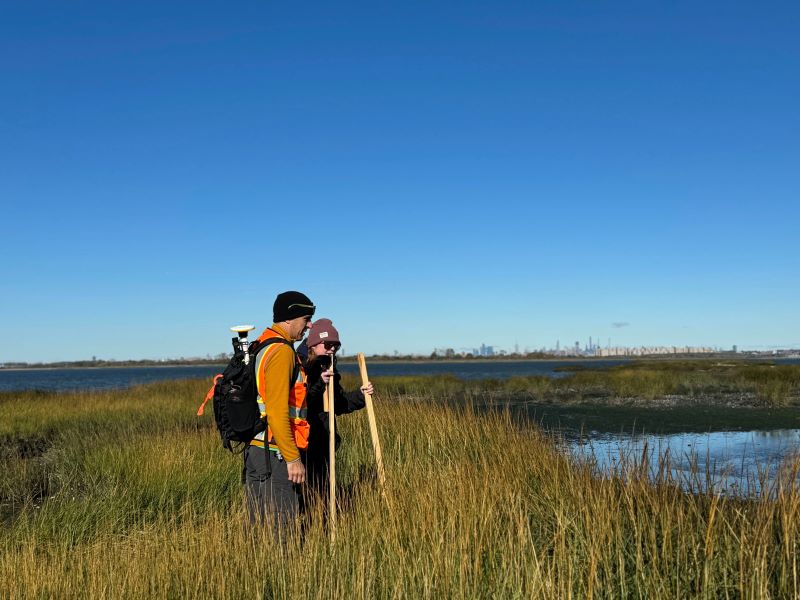
Biohabitats的科學(xué)家在田野中采集數(shù)據(jù),用于為美國(guó)陸軍工程兵團(tuán)修復(fù) 62 英畝的Stony Creek沼澤島。
Biohabitats scientists collecting data as part of an effort to restore 62 acres of Stony Creek Marsh Island for the U.S. Army Corps of Engineers. cre. Biohabitats.
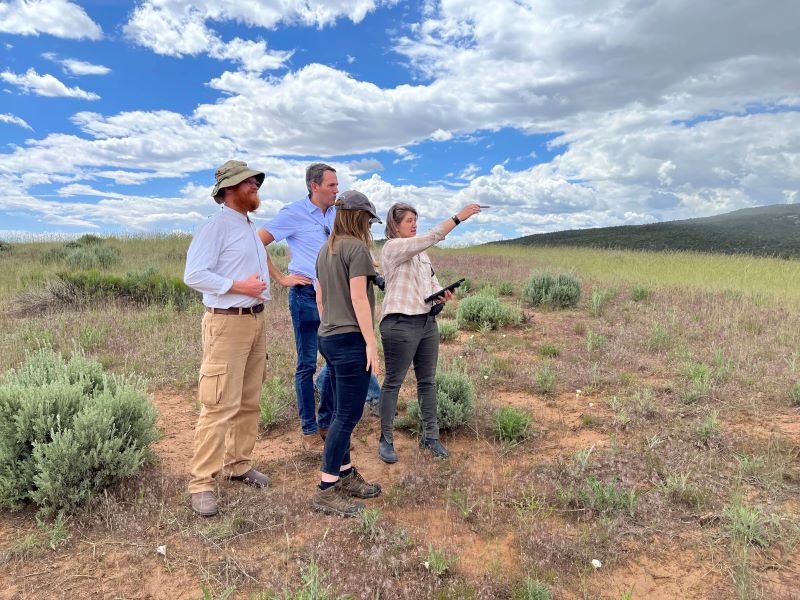
Biohabitats團(tuán)隊(duì)正在合作開展西南盆地和山脈生物區(qū)的規(guī)劃項(xiàng)目。
Biohabitats team members collaborating on a planning project in the Southwest Basin and Range Bioregion. cre. Biohabitats.
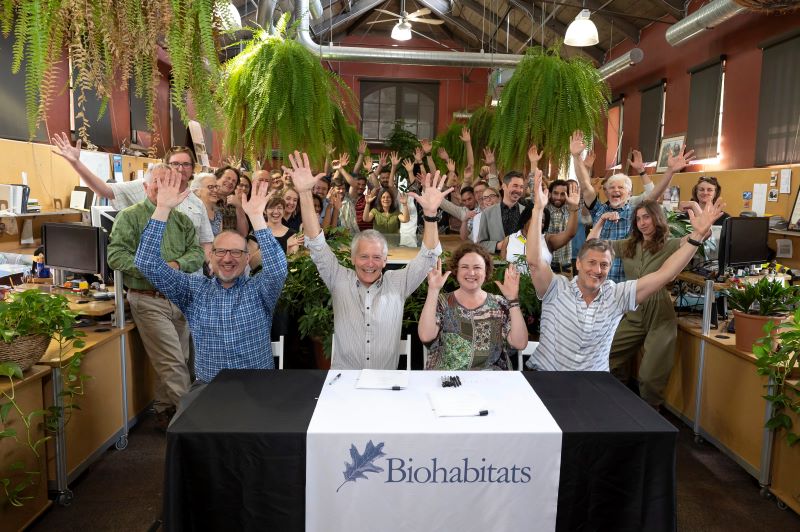
Keith與Biohabitats成員共同慶祝公司公司所有權(quán)轉(zhuǎn)變?yōu)橛览m(xù)信托。
Keith Bowers and members of the Biohabitats team celebrate the firm’s ownership transition to a Perpetual Purpose Trust. cre. Larry Canner.
鳴謝
ACKNOWLEDGEMENT
出品/Production: ArchiDogs 筑格傳媒
采訪及文案/Interview & Record: Magic Sun (Coen Partner 景觀設(shè)計(jì)師), Shuo Yan (Field Operations 景觀設(shè)計(jì)師)
校對(duì)/Proofread: Sherry Li, Fangying Shi
專欄策劃/Column Planning: Miranda, Jiqing Zhu
特別鳴謝/Acknowledgement: ASLA, Biohabitats
發(fā)文編輯|Magic Sun (HGA 景觀設(shè)計(jì)師)
審核編輯|Heloise,Sherry
版權(quán)?建道筑格ArchiDogs,轉(zhuǎn)載請(qǐng)聯(lián)系media@archidogs.com
若有涉及任何版權(quán)問題,請(qǐng)聯(lián)系media@archidogs.com,我們將盡快妥善處理。

